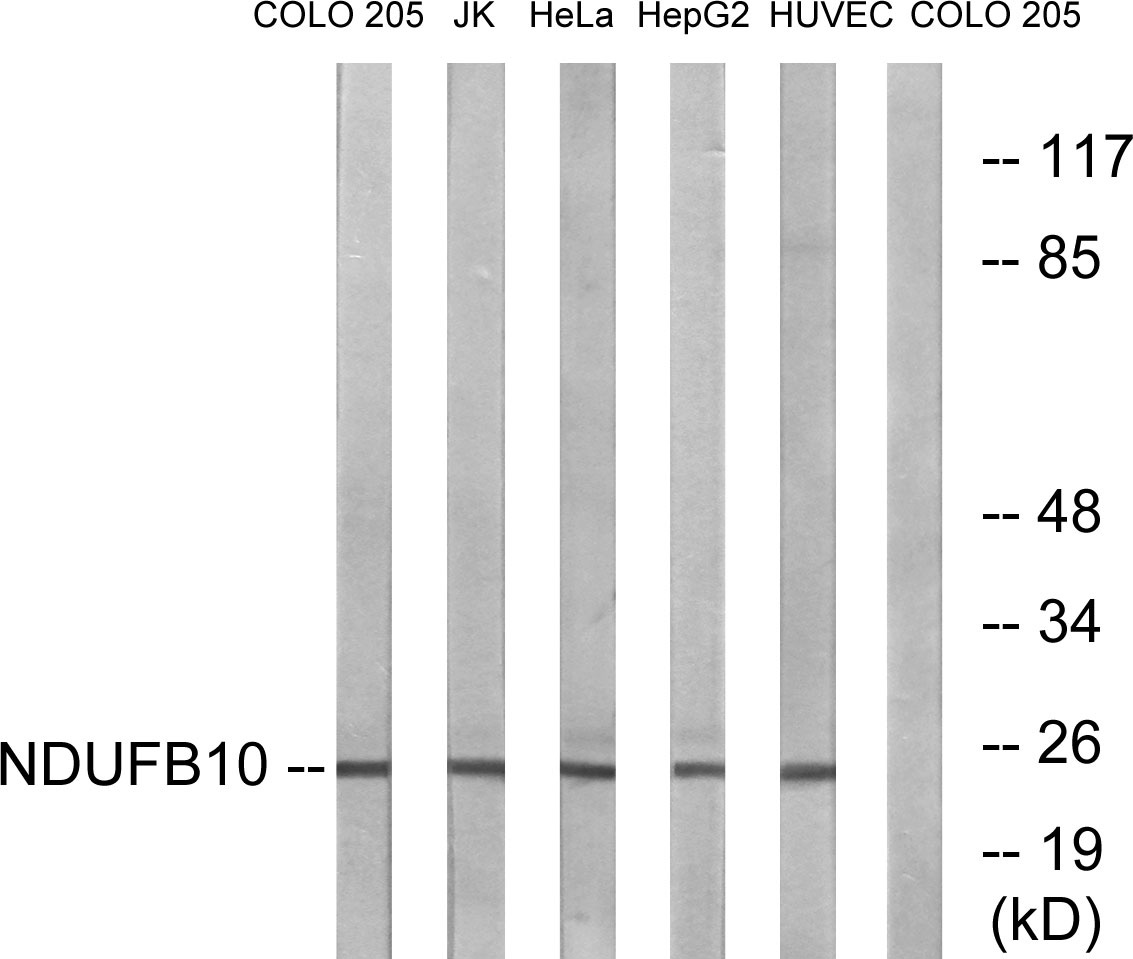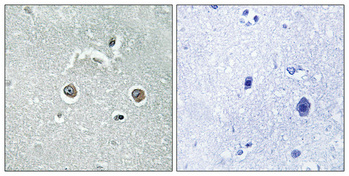产品名称
NDUFB10 Rabbit Polyclonal Antibody
别名
NDUFB10; NADH dehydrogenase [ubiquinone] 1 beta subcomplex subunit 10; Complex I-PDSW; CI-PDSW; NADH-ubiquinone oxidoreductase PDSW subunit
蛋白名称
NADH dehydrogenase [ubiquinone] 1 beta subcomplex subunit 10
存储缓冲液
Liquid in PBS containing 50% glycerol, 0.5% BSA and 0.02% New type preservative N.
Human Gene Link
http://www.ncbi.nlm.nih.gov/sites/entrez?db=gene&term=4716
Human Swissprot No.
O96000
Human Swissprot Link
http://www.uniprot.org/uniprotkb/O96000/entry
Mouse Swissprot No.
Q9DCS9
Mouse Swissprot Link
http://www.uniprot.org/uniprot/Q9DCS9
免疫原
The antiserum was produced against synthesized peptide derived from human NDUFB10. AA range:63-112
特异性
NDUFB10 Polyclonal Antibody detects endogenous levels of NDUFB10 protein.
稀释度
WB 1:500 - 1:2000. IHC 1:100 - 1:300. ELISA: 1:40000.. IF 1:50-200
宿主
Polyclonal, Rabbit,IgG
背景介绍
function:Accessory subunit of the mitochondrial membrane respiratory chain NADH dehydrogenase (Complex I), that is believed to be not involved in catalysis. Complex I functions in the transfer of electrons from NADH to the respiratory chain. The immediate electron acceptor for the enzyme is believed to be ubiquinone.,similarity:Belongs to the complex I NDUFB10 subunit family.,subunit:Complex I is composed of 45 different subunits.,
组织表达
Cerebellum,Ovary,Skeletal muscle,Skin,Umbilical cord blood,
细胞定位
Mitochondrion inner membrane ; Peripheral membrane protein ; Matrix side .
信号通路
Oxidative phosphorylation;Alzheimer's disease;Parkinson's disease;Huntington's disease;
功能
function:Accessory subunit of the mitochondrial membrane respiratory chain NADH dehydrogenase (Complex I), that is believed to be not involved in catalysis. Complex I functions in the transfer of electrons from NADH to the respiratory chain. The immediate electron acceptor for the enzyme is believed to be ubiquinone.,similarity:Belongs to the complex I NDUFB10 subunit family.,subunit:Complex I is composed of 45 different subunits.,
纯化
The antibody was affinity-purified from rabbit antiserum by affinity-chromatography using epitope-specific immunogen.



